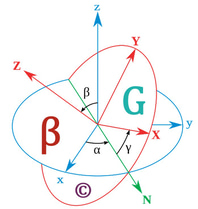Effective Quality Control Measures in Electrical Installations
Electrical installations are the backbone of modern infrastructure, powering everything from homes and offices to industrial facilities and smart cities. However, even a minor flaw in an electrical system can lead to serious consequences, including safety hazards, operational failures, and costly repairs. This is why implementing effective quality control measures is essential to ensure the reliability, safety, and efficiency of electrical installations. I’ve worked on numerous projects where rigorous quality control has been the key to success. In this blog, I’ll explore the importance of quality control in electrical installations and share practical measures to ensure excellence at every stage of the process.
ELECTRICAL ENGINEERINGPROJECT MANAGEMENT
Engr. Benjamin V. Gonzales Jr.
2/12/20253 min read
Why Quality Control Matters in Electrical Installations
Quality control is not just about meeting industry standards—it’s about delivering systems that are safe, durable, and efficient. Here’s why it’s crucial:
Safety: Faulty electrical installations can cause fires, electric shocks, and other hazards.
Reliability: High-quality installations ensure uninterrupted power supply and minimize downtime.
Compliance: Adhering to local and international standards is mandatory to avoid legal issues.
Cost Savings: Preventing defects during installation reduces the need for costly repairs and rework.
Reputation: Delivering quality work enhances your credibility and builds trust with clients.
Key Quality Control Measures for Electrical Installations
1. Develop a Comprehensive Quality Control Plan
A well-defined quality control plan serves as a roadmap for ensuring excellence throughout the project.
Action Steps:
Outline quality standards and inspection criteria for each phase of the installation.
Assign responsibilities to team members for monitoring and reporting quality issues.
2. Use High-Quality Materials and Equipment
The quality of materials and equipment used in electrical installations directly impacts the system’s performance and longevity.
Action Steps:
Source materials from reputable suppliers with proven track records.
Verify that all components meet relevant industry standards and certifications.
3. Conduct Regular Inspections and Testing
Inspections and testing are critical for identifying and addressing issues before they escalate.
Action Steps:
Perform visual inspections to check for proper wiring, connections, and installations.
Use testing equipment, such as multimeters and insulation testers, to verify system functionality.
Conduct final testing to ensure the installation meets design specifications and safety standards.
4. Adhere to Industry Standards and Codes
Compliance with industry standards and codes is non-negotiable for electrical installations.
Action Steps:
Stay updated on local and international electrical codes, such as the National Electrical Code (NEC) or IEC standards.
Ensure all installations are designed and executed in accordance with these codes.
5. Train and Certify Your Team
A skilled and knowledgeable team is essential for delivering high-quality electrical installations.
Action Steps:
Provide regular training on the latest technologies, tools, and best practices.
Ensure all team members hold relevant certifications and licenses.
6. Implement a Documentation System
Proper documentation ensures transparency and accountability throughout the project.
Action Steps:
Maintain detailed records of design plans, material specifications, and inspection reports.
Document any deviations from the original plan and the corrective actions taken.
7. Monitor and Address Environmental Factors
Environmental conditions, such as temperature, humidity, and exposure to chemicals, can affect the performance of electrical systems.
Action Steps:
Assess environmental factors during the design phase and select materials accordingly.
Implement protective measures, such as enclosures or coatings, to safeguard installations.
8. Conduct Post-Installation Reviews
A post-installation review helps identify lessons learned and areas for improvement.
Action Steps:
Gather feedback from the project team and clients.
Analyze any issues encountered during the installation and develop strategies to prevent them in the future.
Real-World Example: Quality Control in a Commercial Building Project
Consider a commercial building project requiring complex electrical installations, including lighting, HVAC systems, and data networks. By implementing a robust quality control plan, the project team ensured that all installations met safety and performance standards. Regular inspections and testing identified and resolved issues early, while adherence to industry codes ensured compliance. The result was a reliable and efficient electrical system that exceeded client expectations.
Conclusion
Effective quality control measures are essential for delivering safe, reliable, and efficient electrical installations. By developing a comprehensive quality control plan, using high-quality materials, conducting regular inspections, and adhering to industry standards, you can ensure excellence at every stage of the process.
At BG Consultancy, we specialize in helping businesses achieve the highest standards of quality in their electrical installations. If you’re looking for expert guidance or support, visit us at www.bgconsultancy.net. Let’s work together to power your projects with precision and reliability.
At BG Consultancy, we specialize in helping businesses optimize their procurement strategies and achieve project success. If you’re facing challenges with electrical procurement or need expert guidance, visit us at www.bgconsultancy.net. Let’s work together to keep your project on track.
BG Consultancy, a trusted partner for businesses seeking innovative solutions to complex procurement and project management challenges. Visit www.bgconsultancy.net to learn more about our services and how we can help you achieve your goals.
Note: This blog is an original piece written by Benjamin Gonzales and is protected under copyright laws. Any unauthorized use or reproduction is strictly prohibited.





